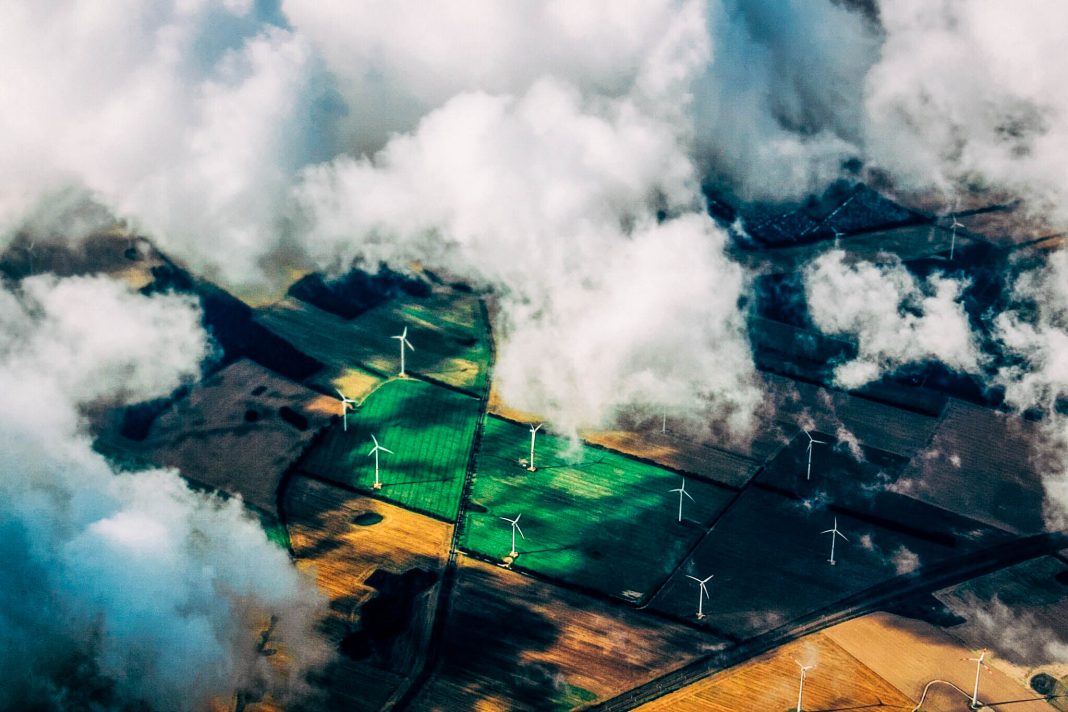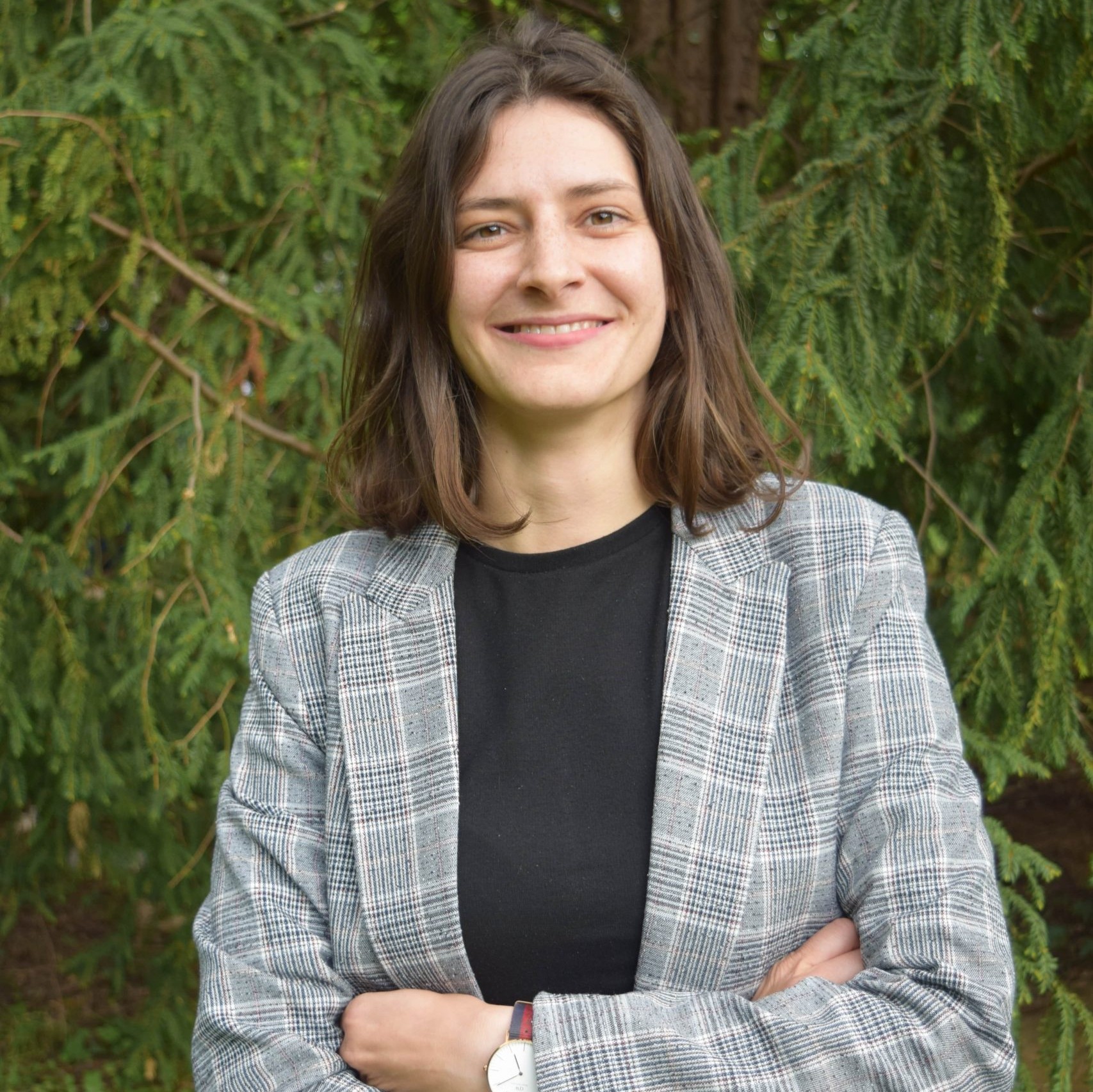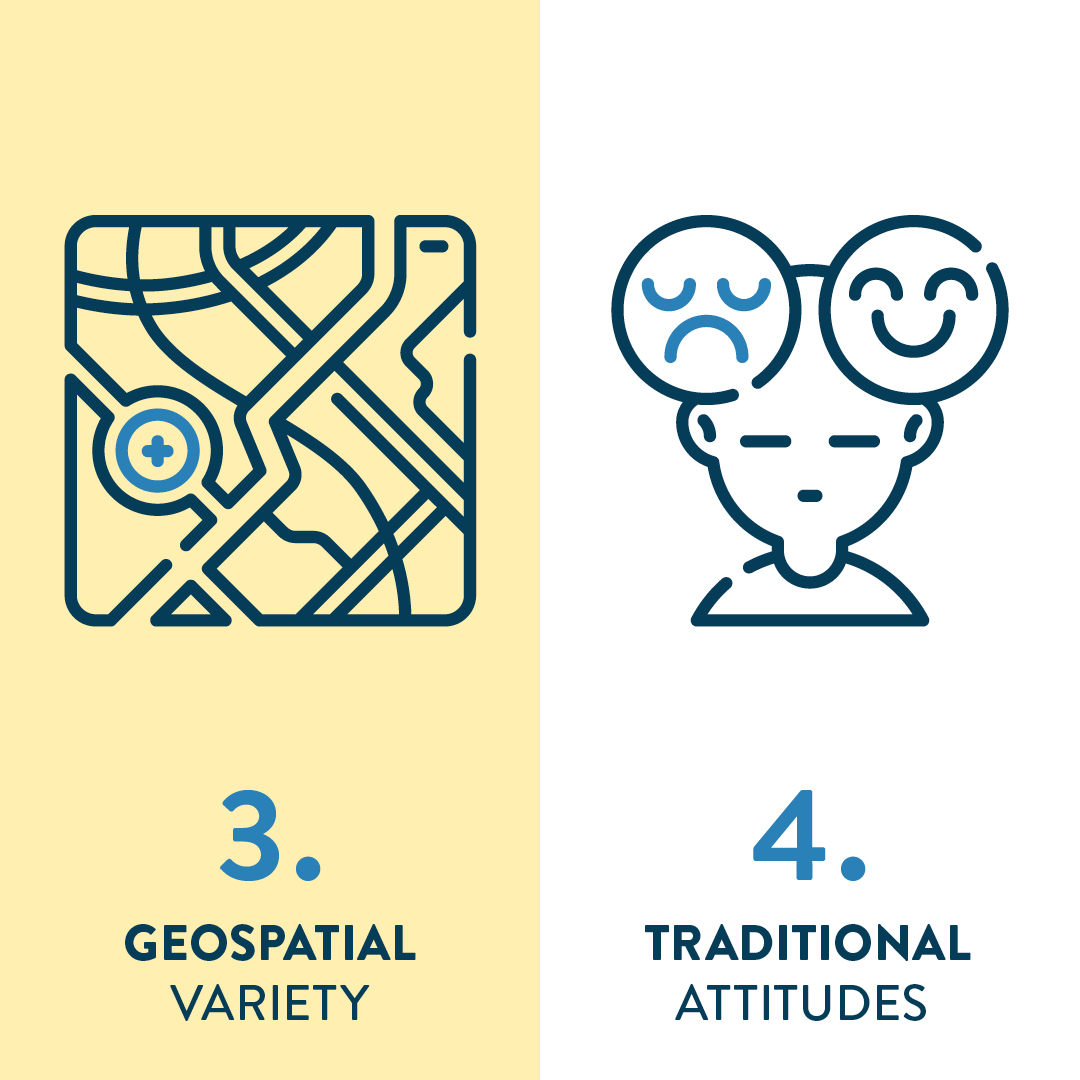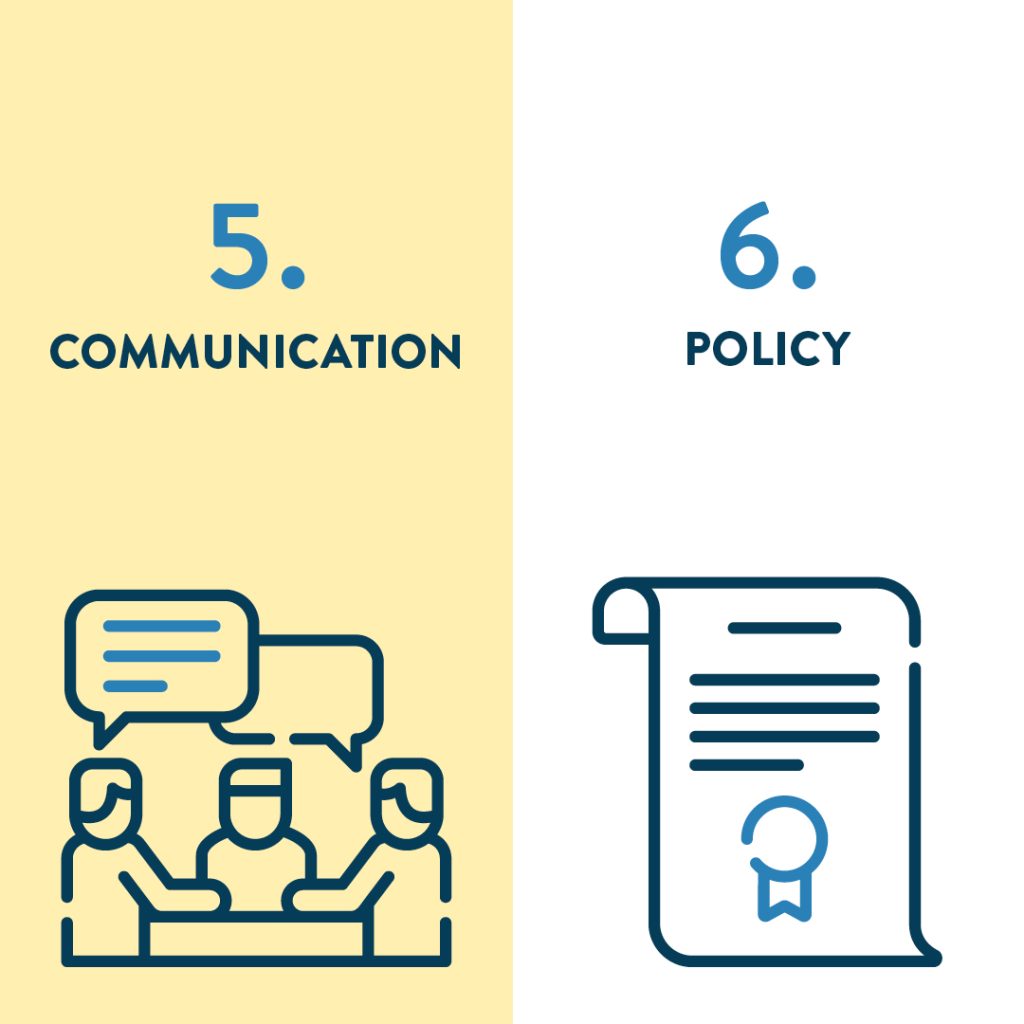While the food-water-energy nexus offers great advantages on one hand, on the other it’s important to keep in mind this system is not yet widely acknowledged, so it naturally comes with some hurdles. Read about the most typical FWE challenges here for your head start into the nexus.
Thinking about the food-water-energy (FWE) nexus, it’s only normal some questions may arise: where does self-sufficiency fit in? Can it be measured? Does it offer an answer to food insecurity? Is it really all that secure – what about when a drought hits and people can no longer grow local, adding demand to existing supply chains? And to be honest, we don’t blame you… the FWE nexus is a tricky one – a complex system. Let’s look at some of the most common challenges cities are most likely to face.
Population Growth
According to SUGI (Sustainable Urbanisation Global Initiative), by 2050 the world’s population will have increased to 9 billion people. This means higher demand for food, water, and energy. Adding climate change and the already-occurring resource degradation to the pot and we get the biggest challenge of all: making sure the demands of an increasing population are met.
In fact, Future Earth predicts that by mid-century, the “demand for energy will nearly double while water and food demand is expected to increase by over 50%.”
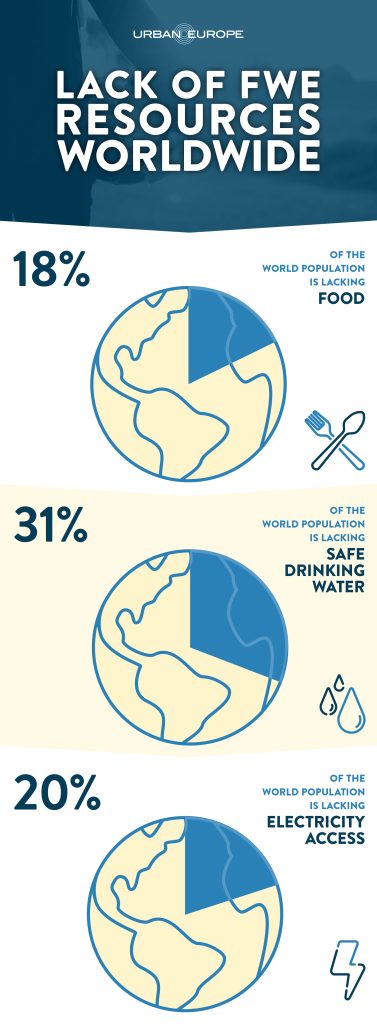
The Earth’s ability to satisfy our rising needs for water, food, and energy is in trouble. Overpopulation, excessive urbanisation, and human interference with the natural environment certainly don’t help. Higher demand for resources and the decreasing ability to sustain a supply are causing an increase in prices, the alteration of land structures is adding to climate change impacts, declining investments in urban development contribute to lower urban resilience, and all these combined undermine the survival of future generations.
Food Poverty and Inequality
“The trade-offs between food, water and energy can generate unsustainable urbanisation pathways, which contribute to socio-economic problems including poverty, conflicts and diseases.”
SUGI
With population growth comes consumption increase. Combining these with insufficient infrastructure, housing, transportation and mobility intricacies, along with socio-economic problems and environmental issues, we are faced with the “greatest challenges to resource efficiency and the sustainable management of natural resources”. The way to solve it is to address the problems, as now all these just put higher pressure on water and energy supply, recycling, land use, and food security.
Geospatial Variety
Each city is different in an ecological, geographical, and cultural sense. Available resources relate, and are limited, to its bioregion. It’s only logical that solutions for sustainability correlate with the given local context.
For example, Jordan faces lessening of food-producing land due to urbanisation, desertification, and water mismanagement, while Tokyo feels strong pressures on urban agriculture due to “urban development, the ageing of farmers, and depopulation.”
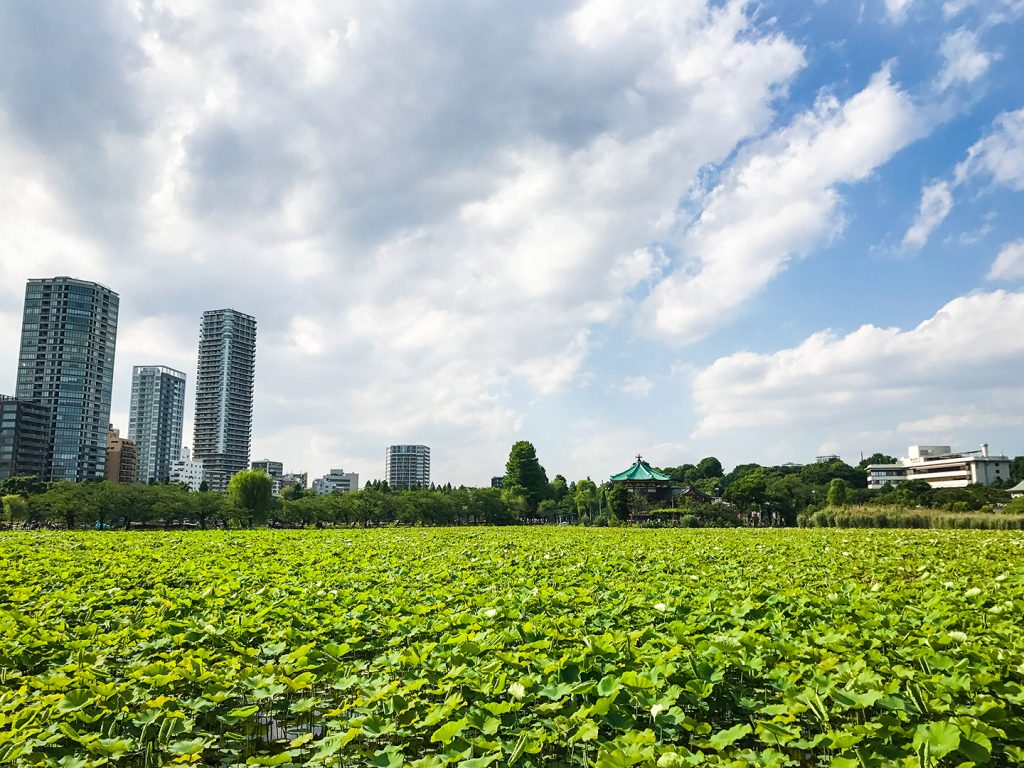
Separate regions have “distinct concerns and the priority of problems to discuss”. Solutions depend on the socio-economic and natural conditions of the area, which is essentially those that narrate the ability to design a city. “Typically, the space reserved for producing or managing [FWE] components locally within densely built-up urban environments is very limited while more opportunities are available in suburban or extra-urban zones.” However, with the help of a revolution in renewable energy production, local food can also be grown in urban environments.
Changing Traditional Attitudes
“The reason why we are not responding well to sustainability is because we take for granted that 2,000 years of history have led us to the best model we have,” says Alessandro Melis, co-lead of the CRUNCH project.
“The main challenge is how to deal with complexity. Our civilization is not used anymore to dealing with complexity. We prefer to deal with linear thinking and simplicity.”
Alessandro Melis, CRUNCH co-lead
For example, in Southeast Asia and other developing countries, traditional habits towards food, water, energy, and waste pose implementation problems. Food is often wasted because of out-of-date storage methods, and poor supply and distribution management. However, in order for farmers to change their storage practices, their incomes need to rise. Scarcity of resources creates higher prices, and the upgrades in technology mean more costs – that many can’t afford.
Yet, to Alessandro, the challenge is clear: it’s not about knowing how to change and whether we can or cannot change, the problem is the resistance to change. “The solution for the future of cities is a social and political discussion. The city of the future cannot be the city that we know”, Alessandro explains further.
Proper Communication Issues
“To date, we have a limited understanding of the FWE system’s complexity, resilience and thresholds.”
SUGI
“Individual stakeholders may not fully understand the interconnections between food, water, and energy systems, and making these connections explicit can be difficult or time consuming”, reports SUGI, adding that communication problems occur due to the inability of various stakeholders to find a shared language. This is especially true when it comes to targeting a wider audience. Prominent actors in the nexus have on occasion “encountered criticism from the public and civil society due to a lack of knowledge of project technologies”. The importance lies in bridging the gap between highly academic reports and real-life implementation.

In a Food-Water-Energy Nexus webinar for the Creating Interfaces project, JPI reported that the “nexus concept is difficult to communicate locally” and we need “to find ways to make it better visible and understandable”. The way to do this is to focus on local communities and local needs – choosing a starting point and then expanding. The Creating Interfaces team believes their concept of coordinating the FWE nexus could help overcome the current silo thinking and boost cooperation and knowledge-sharing between different local actors.
Despite the amount of research and information on the FWE nexus already out there, “the concept of FEW nexus is still not fully acknowledged on the ground”. This challenge presents itself as science and policymaking fields are not yet working together, with research findings not being “efficiently incorporated in the planning agendas.”
However, this problem stands as a double-edged sword. Also within the FWE nexus, the trouble of communicating between the three sectors persists, as each has its own system, making it difficult to act united.
Data Availability
“Oftentimes, difficulties in accessing existing data limits opportunities for analysis and hinders the study process. In addition, there is often a need for combining data from different sectors that are not necessarily designed to be analyzed together.” Scientists prefer quantitative data and overlook “qualitative analysis” and stakeholder outreach.

Limited high-quality data availability about the FWE nexus poses a barrier for synchronisation with administrative systems, and the inability to visualise future – or current – plans. This presents an obstacle in policymaking. If there is data, there seems to persist a non-holistic approach to sharing the knowledge. Furthermore, “there is no synchronized analytical framework for monitoring or managing conflicts and trade-offs between urban and rural systems”.
This is what the Creating Interfaces project set out to resolve – through creating the Citizen Science tool.
Citizen science adds quality data collection. However, there is often “a disconnect between software engineers and lay individuals in the community” making citizen science tools a challenge. “To help bridge this gap, several teams designed the software development process to be iterative in order to account for the many needs of the various beginning and end users.”
Policy Challenges
Cities differ not only in the geographical sense, but also on the level of “development, accessibility, and functionality of their infrastructure” – which only seems to present stakeholders with new sets of policy challenges.
Lack of data (and knowledge) consequently means the integrated policy frameworks in place do not meet the needs of the city system. This “underestimates the importance of local interests and incentives of key actors operating within and between countries that often go against regional commitments and scientifically sound resource management scenarios”.
On the other hand, there’s a danger that a researcher might mainly focus on human needs, and thus neglect the environmental aspects. “The challenge is to develop policies that support the sustainability of water, energy, and food resources, while simultaneously providing access to these resources for all levels of society.”
FWE Nexus Challenges in a Nutshell
Implementing the food-water-energy nexus certainly proves to be a difficult (and daunting) task. It’s important to keep in mind all three sectors are separate elements, yet realise they have to be properly and effectively interconnected to serve as an efficient and purposeful nexus, not only regarding the technological aspect, but policy implementation, environmental protection, and human well-being as well. Currently, the data available might present a challenge, but there are various nexus projects already out there, determined to make it easier for future-generation users.
Why go through all this trouble, you might ask? Find out the many benefits of a FWE nexus here.
Note: This article is commissioned by and produced in collaboration with JPI Urban Europe, a European research and innovation hub founded in 2010. JPI Urban Europe funds projects which address the global urban challenges of today. To make the food-water-energy nexus (FWE nexus) more tangible and the results of successful, funded projects in this context accessible to a wider audience, JPI Urban Europe collaborates with CityChangers.org. Details about JPI Urban Europe can be found on the respective websites linked throughout the article, which was originally published here.

